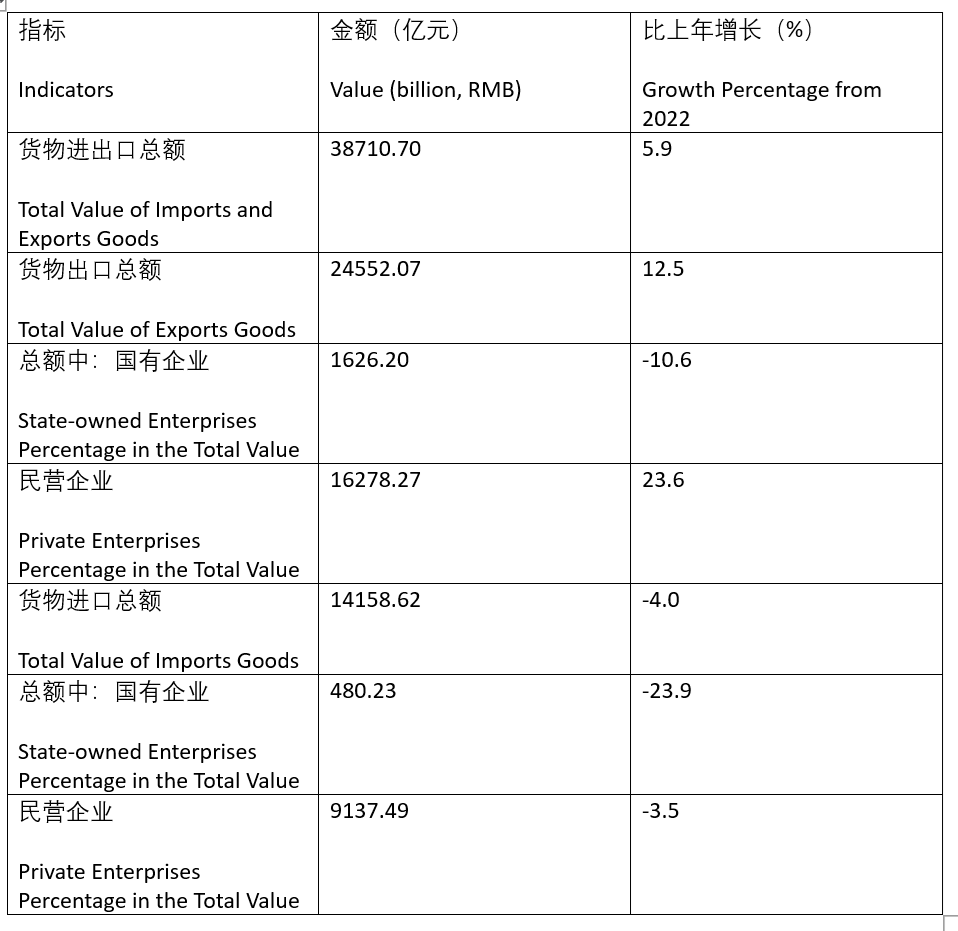“I do not care who my competitor is” - China’s Private Economy and Technological Innovation

Grace Wang explores why there is growing national pride for goods 'made in China'.
On February 17th, 2025, China’s President Xi spoke at a high-level symposium of private sector entrepreneurs, the first meeting of its kind since 2018. Xi’s meeting with leading tech entrepreneurs in China reflects the significant role technological innovation plays in advancing and transforming China’s economy as well as the role entrepreneurs play in innovation. China has been developing its technological capacity to produce advanced technologies faster than had been thought, because, as argued in this article, it is Chinese people’s strong will and desire, rooted in the national culture and history, which fundamentally stimulates China’s economic and technological development. Overestimating the role of US-China tech rivalry will not, therefore, be conducive to long-term US policymaking.
Role of Private Enterprises and Private Sector in China
Chinese private enterprises have leapfrogged competitors with the great process of China’s Opening-Up and Reforms. To ensure Chinese private entrepreneurs of the uniqueness and characteristics of China's development model in the midst of an increasingly fierce trade war with the United States, the meeting, in fact, reveals the fundamental logic of China’s economic developmental path since 1978: Enterprises as the main body, market as the basis, and government as the backing support (企业为主体,市场为导向,政府为后盾).
Take Shenzhen for example. As China’s first special economic zone, Shenzhen and the Greater Bay Area have incubated world-renowned private enterprises over the last four decades in strategic areas such as bio-engineering, clean energy, advanced manufacturing and internet services. In 1999, Shenzhen city's government issued a Notice of Shenzhen Municipal People's Government on Issuing Several Regulations on Further Supporting the Development of High-tech Industries (《关于进一步扶持高新技术产业发展的若干规定》)[1]. The 1999 revised document noted the initial success of private and collective owned technology enterprises since the “1987 Document[2].” It addressed Shenzhen’s weakness in developing high-tech industries, particularly in terms of talent and resources. Therefore, more government support was proposed. Seen from Shenzhen and the Greater Bay Area’s developmental trajectory, local government supports talent attraction and the allocation of resources. But more importantly, local government adapts to the change of international markets to strategically direct and plan key industries that private enterprises can play a role in.
Take international trade for instance. Shenzhen has gradually resumed manufacturing, production and foreign trade since Covid. Despite glooy analyses of China’s private industries, statistics show that, in terms of the total value and the increase volume of imports and exports in 2023, private enterprises surpassed state-owned corporations by large amounts. The figures below indicate the robust growth and resilience private enterprises have demonstrated despite facing uncertainties and international chaos.
Total volume of goods imports and exports and growth rate in 2023

Note: Shenzhen Statistics Bureau
Technological innovation is playing an increasingly important role in advancing and transforming China’s economy. The proportion of private economic business entities in high-tech industries in China’s national economy has steadily increased. In key high-tech areas such as manufacturing and scientific research, and technical services, the proportion of private economic business entities has evolved from 2019’s 95.9% to 2024’s 96.1% (as to May 2024), and 2019’s 91.9% to 2024’s 94.4% respectively. Among newly established private enterprises in high-tech industries since 2019, high-tech manufacturing accounts for 90.2%, high-tech services accounts for 93.3%, the four new economies[5] account for 93.4%, and core industries of the digital economy account for 94.6%. It is obvious that the private economy plays a main role in China’s national economy and its unwavering technological innovation and upgrading.
Those figures dispute negative interpretations of Xi’s meeting and send a strong message to the West: “China not only has the intention but also resources and capacity to innovate its way out of technology restrictions.” The obsession with the notion that China views the West as its opponent and competitor, fundamentally indicates the ignorance of Chinese culture and history. I challenged this popular view in my article on Huawei’s innovation by showing that it is impossible to accoutn for China’s technological development and Huawei’s innovation experience without acknowledging the Chinese proverb: Dad has it, Mom has it, but it is better to have it yourself. In October 2019, Huawei has began producing base stations without direct US imports, only five months after the first round of US tech sanctions. By January 2023, over half of Huawei’s components for its small base stations were made in China, with only 1% imported from the US.
The misinterpretation of China’s development model and the overemphasis on “tech competition”, on the surface, reflects the trade tensions between the United States and China. Further, China’s technological breakthroughs, led by its national private enterprises, challenge the Western theory that there will be no sustained economic growth in extractive institutions because creative destruction is a product of capitalism.
China’s Economic Collapse and Technological Innovation?
The term “creative destruction” is brought to the forefront of capitalism economic theory by Joseph Schumpeter. Schumpeter stressed the role of entrepreneurial innovators in inventing and introducing new products and services that bring fundamental changes and dynamic competition. Artificial intelligence, as a technological breakthrough, can be considered as a new method of production. China’s continuing AI wins on the global stage, such as Deepseek and Huawei’s Kirin chip, demonstrate successful “creative destruction” produced out of a non-capitalist Western society.
How could it be possible that radical technological innovations stem from extractive political and economic institutions where citizens are deprived of incentives? The famed authors of Why Nations Fail claimed that Chinese growth is based on the adoption of existing technologies and rapid investment rather than creative destruction. When the book was published in 2012, they predicted which types of societies were likely to achieve sustained economic growth, while noting that “growth under extractive political institutions, as in China, will not bring sustained growth, and is likely to run out of steam” because nations have to transform their institutions from extractive to inclusive ones if they want to take steps towards sustained prosperity.[6]
The two scholars argued that “because of the party’s control over economic institutions, the extent of creative destruction is heavily curtailed, and it will remain so until there is radical reform in political institutions.”[3] But, the extent of creative destruction is not truncated. In the China case, history and culture, as a form of incentives plant the seeds in modernizing China’s economic development and national rejuvenation.
Culture, Identity and Innovation Incentives
When I was conducting interviews during my fieldwork in Shenzhen, I told my interviewees that my forthcoming book was about Shenzhen’s technological innovations. People’s enthusiasm and determination in making a Silicon Valley in China is beyond imagination. “Innovation is the driving force,” seems to be a catchphrase. Although Shenzhen - Hong Kong - Guangzhou has been ranked as the No.2 global cluster of innovation for years, ahead of Silicon Valley, which ranked the fifth, most people think Shenzhen is lagging behind Silicon Valley. “We need to play catch up and work diligently,” is a popular sentiment among Chinese tech entrepreneurs.[4]
In other words, reviving the Middle Kingdom’s historical glory and establishing a strong new China with advanced technological capacity is a goal embedded in China’s technological ambition. It is not merely the Chinese government’s aspiration, as most Western analysts and observers claim; it is the Chinese people who want to be treated respectfully for China’s national strength and competitiveness. This collective feeling is particularly apparent among Chinese business leaders. National identity adds value to Chinese business executives, entrepreneurs, and innovators. It is easy to sympathize with their disappointment when Western businesspeople acknowledge the creative features and quality of their products but are reluctant to accept that those products are “made and created in China”.
“My smart watch is a Huawei brand”, a Chinese youth proclaimed as he proudly showed off his smart watch. He knew nothing about the US-China technological rivalry. He uses his smart watch to make purchases via Wechat Pay or Ali Pay. He was born and is growing up in an era where he truly believes in and enjoys “made and created in China.“
Dr. Grace Yuehan Wang, is a visiting scholar at the London School of Economics, founder at Network Media Consulting, an advisory firm with a focus on digital economy and AI governance in Asia-Pacific. She is also a co-founder of an AI-enabled educational tech company based in Beijing.
Photo by Youssef Samuil
Notes
[1] The Four New Economies, namely “四新经济”,新技术 new technology、新业态 new formats、新产业 new industries、新商业模式 new business models.
[2] Retrieved from Why Nations Fail eBook version, page 9.
[3] Retrieved from Why Nations Fail eBook version, page 14.
[4] The Top 100 Science and Technology Clusters, written by Kyle Bergquist and Carsten Fink, released by the World Intellectual Property Organization in 2020.
[5] Shenzhen City Government issued the first version of the document in 1998, translated into Chinese: 《关于进一步扶持高新技术产业发展的若干规定》The revised version came out on September 23, 1999.
[6] Shenzhen City Government issued the 1987 document: 《深圳市人民政府关于鼓励科技人员兴办民间科技企 业的暂行规定》.


